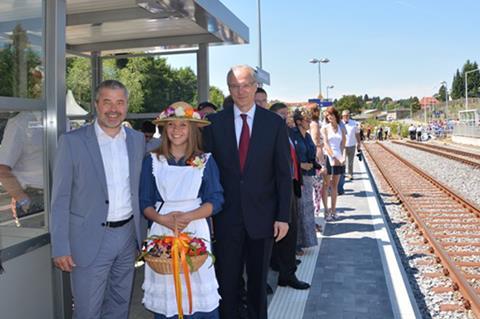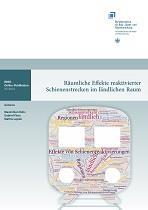
GERMANY: Reopening rural railways offers an important spectrum of benefits, according to a study commissioned by the Federal Ministry for Housing, Urban Development & Building. These range from positive effects on land use to advantages for local and regional economies, transport, the environment and society.
The Räumliche Effekte reaktivierter Schienenstrecken im ländlichen Raum (Structural Effects of Reactivated Rail Routes in Rural Areas) study was conducted by PricewaterhouseCoopers WPG, and looked in detail at six reopening projects in rural areas, three of which were successful and three of which have not yet come to fruition.

The authors identified 80 different outcomes and effects from reopening projects. Of these, 28 related to the local or regional economy, and another 28 were related to transport. A further 12 were concerned with spatial development or land use and planning, seven were impacts on the environment and five were societal.
Noting that the size of Germany’s rail network had shrunk from 46 400 km in 1950 to 39 089 km in 2021, with 5 148 km closed since the railway reforms of 1994, the report says that 933 km were reactivated for passenger traffic between 1994 and 2020, with a further 364 km reopened for freight. It points out that Deutsche Bahn undertook in 2019 not to close any more lines and that it set up a taskforce to examine possible reopening schemes.
Many reopening projects were more successful than expected, the authors say. They cite the example of the Schönbuchbahn near Stuttgart in Baden-Württemberg where passenger trains were reinstated in 1996; by 2000 the service was carrying 6 000 passengers a day compared with a forecast of just 2 500.
Funding for reopening projects is available from various sources including the Gemeindeverkehrsfinanzierungsgesetz (Community Transport Finance Act), the report says. It notes that the criteria used to establish a standardised cost:benefit analysis were due to be updated by the end of 2021 in order to take account of environmental concerns, climate change and health.
The routes analysed for the study were:
- the 0∙7 km cross-border link from Sebnitz to Dolni Poustevna in the Czech Republic, reopened in 2014;
- the 10∙1 km Stahringen – Stockach line in Baden-Württemberg, reopened in 1996;
- the 32∙2 km Brügge – Meinerzhagen – Gummersbach line in Nordrhein-Westfalen, reopened in three stages in 2003-17;
- the 48 km Schweinfurt – Kitzingen line in Bayern that last carried passenger trains in 1987 and which has been partly dismantled;
- the 61 km Langenlonsheim – Büchenbeuren line in Rheinland-Pfalz that was last used in 1984;
- the 26 km so-called Max and Moritz Bahn from Ernstthal am Rennsteig to Probstzella in Thüringen which was last used in 1997.
The report suggests that reopening of closed rural routes would contribute to more equal living conditions across Germany as the railway would have a significant impact on the quality of life and would influence the location of businesses. Up to 3 million people could benefit from reopenings, the authors believe.
Examining success and failure factors for reopening projects, the authors put forward recommendations that include the need for early and detailed infrastructure planning work and the requirement to consider future capacity needs. Another recommendation is that new or reopened stations should be seen as multi-use mobility hubs to ensure good connections between modes.
The study emphasises the need to form ‘a strong and co-operative network’ among those involved in a project and to ensure ‘direct involvement of political decision-makers as supporters’, as well as ‘early public relations work’.

















